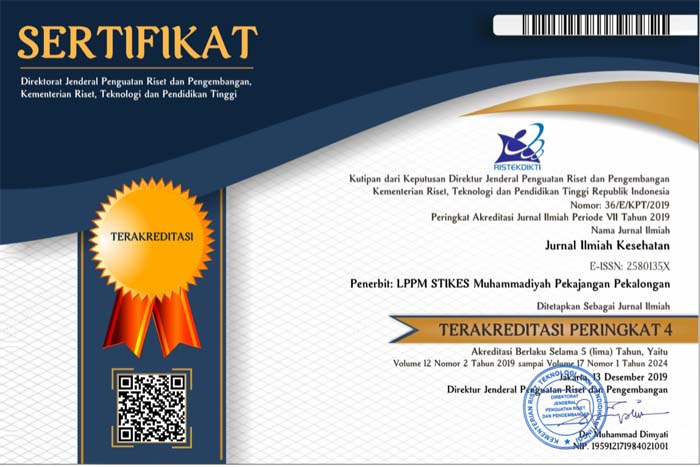Indonesian anti-inflammation herbs mechanism: mini review
DOI:
https://doi.org/10.48144/jiks.v16i2.1453Keywords:
inflamsi, herbal, inflamation parthway, traditional medicineAbstract
This mini-review aims to provide an overview of some commonly used anti-inflammatory herbs in Indonesia. Inflammation is a complex physiological response that plays a role in various diseases, and herbal remedies have been used traditionally in Indonesian culture for their potential anti-inflammatory properties. We utilize Portal Garuda as the primary database for searching herbs with anti-inflammatory activity using the keyword "anti-inflamasi”. The selected herbs discussed in this review include turmeric (Curcuma longa), ginger (Zingiber officinale), clove (Syzygium aromaticum), and cinnamon (Cinnamomum sp.). These herbs have been reported to possess anti-inflammatory effects through various mechanisms, such as inhibition of pro-inflammatory enzymes and cytokines, antioxidant activity, and modulation of immune responses. Moreover, these herbs have also demonstrated safety profiles in traditional use. However, further scientific research is needed to elucidate the specific bioactive compounds responsible for their anti-inflammatory effects and to determine the optimal dosages and formulations for therapeutic use. The exploration of Indonesian anti-inflammatory herbs could contribute to the development of natural and affordable options for managing inflammatory conditions, complementing conventional treatments, and promoting overall health and well-being.
References
L. Chen et al., "Inflammatory responses and inflammation-associated diseases in organs," (in eng), Oncotarget, vol. 9, no. 6, pp. 7204-7218, Jan 23 2018, doi: 10.18632/oncotarget.23208.
K. B. Megha, X. Joseph, V. Akhil, and P. V. Mohanan, "Cascade of immune mechanism and consequences of inflammatory disorders," (in eng), Phytomedicine, vol. 91, p. 153712, Oct 2021, doi: 10.1016/j.phymed.2021.153712.
J. M. Bennett, G. Reeves, G. E. Billman, and J. P. Sturmberg, "Inflammation–Nature's Way to Efficiently Respond to All Types of Challenges: Implications for Understanding and Managing “the Epidemic” of Chronic Diseases," (in English), Frontiers in Medicine, Hypothesis and Theory vol. 5, 2018-November-27 2018, doi: 10.3389/fmed.2018.00316.
E. Yaman, H. Woerdenbag, and O. Kayser, "Jamu: Indonesian traditional herbal medicine towards rational phytopharmacological use," Journal of Herbal Medicine, vol. 4, 06/01 2014, doi: 10.1016/j.hermed.2014.01.002.












